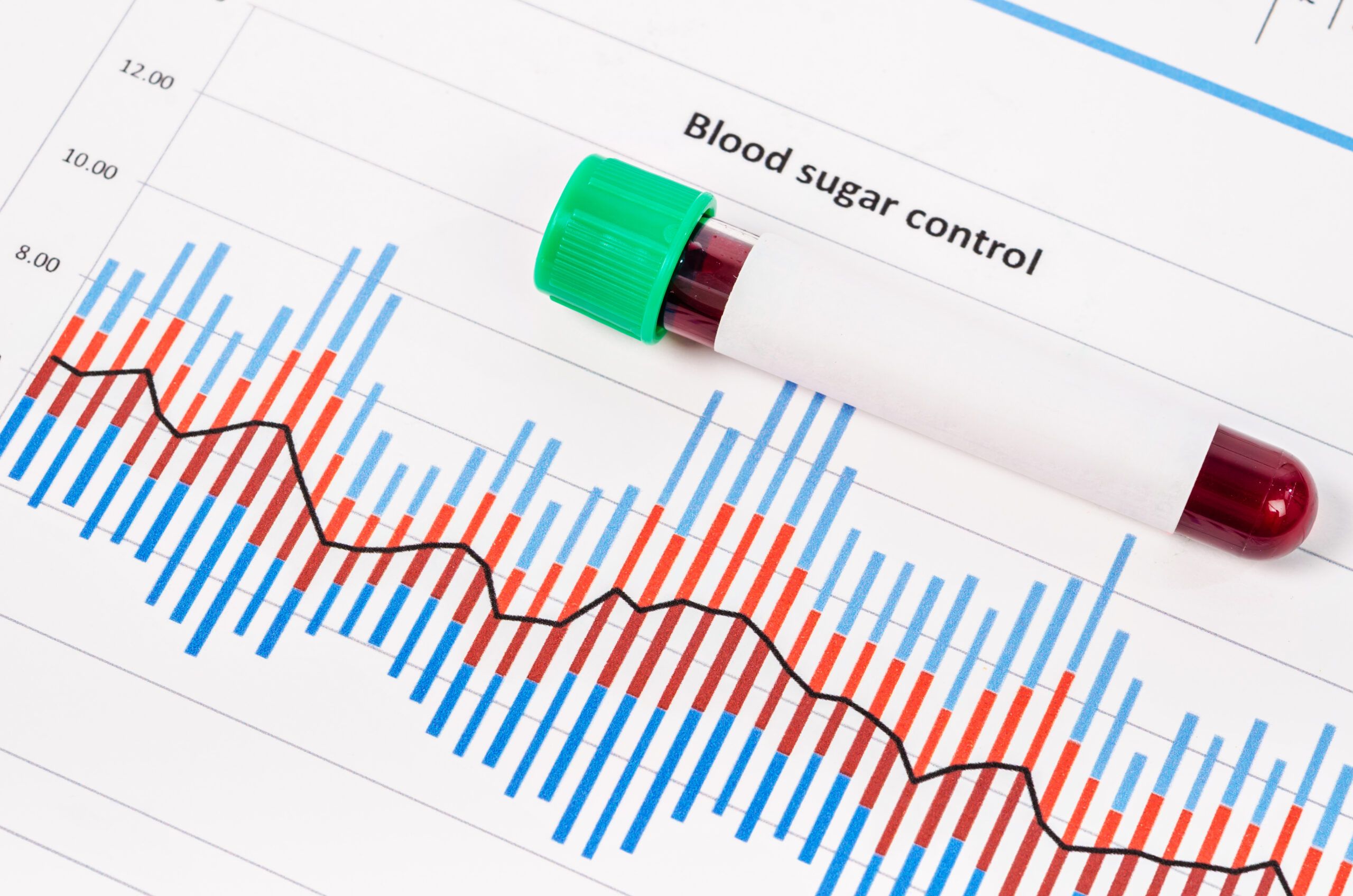- Blogg
- Aging and Insulin – Avoid Diabetes at All Costs

Aging and Insulin – Avoid Diabetes at All Costs
Aging and blood sugar control is the last theme to be discussed in my series of cellular pathways of aging. Over the course of the last several blogs, we have taken a journey to discover the cellular pathways of biological aging and how you can slow that down to ward off chronic disease and look younger. By now you should be looking at least three years younger! You may be implementing different fasting, protein restriction, exercise routines, and generally avoiding food served in the western world.
Consistent themes among these pathways include the regulation of growth and nutrient signaling, as we do not want our body to be in a constant state of growth from a high calorie diet. Since all the pathways we have discussed (see links to the previous blog posts at the end of this post) play a role in regulating growth and nutrient sensing processes, they all affect one another. The final pathway to be discussed in today’s blog is the insulin and insulin-like growth factor signaling (IIS) pathway.
Insulin is a hormone you probably have heard of – it is important to maintaining blood sugar. If you are not aware, insulin is secreted by the pancreas in response to elevated blood sugar. It decreases blood sugar by causing cells in the body to pull sugar out of the blood and into the cell. Other hormones with similar effects to insulin are called insulin-like growth factors (IGFs), with IGF-1 being the predominantly researched IGF in humans.
A Good Clear Message is Key
Type II diabetes is a condition where excess insulin gets produced, but cells do not respond: a condition known as insulin resistance. As a result, blood glucose remains elevated and cells cannot get the energy they need. This underscores the importance of not only the secretion of insulin, but the ability of insulin to signal inside the cell. Like good communication skills, a good message also needs a good audience.
IGF-1 has a similar effect on blood glucose levels. However, IGF-1 is also a powerful regulator of growth, and excess growth causes problems such as cancer. IGF-1 is primarily produced by the liver through the regulation of growth hormone (GH), which as you may have guessed, helps us to grow and rebuild. Both GH and IGF-1 decrease with age, and decreased GH and IGF-1 increase lifespan. (1)
Reverse Aging Through Blood Sugar Control and Lifestyle
In an earlier blog, we discussed a study that reversed biological aging in humans. The study, called the TRIIM trial, reduced biological age by 2.5 years in men 51-65 years of age. The primary goal of the study was to reverse the age-related decline of immune function using GH. Growth hormone is important to support and help our immune system, check, so we want it to be produced. But wait a minute, wouldn’t growth hormone increase biological age? This is where the interaction between pathways becomes important.
Yes, as growth hormone increases so do blood sugar levels by blocking insulin signaling. To prevent this effect the researchers added two medicines that improve insulin signaling: metformin and DHEA-sulfate. In doing this, the beneficial effects of GH are achieved, the patients get more growth hormone, while the negative effects are suppressed (raised blood sugar). This suggests the interaction of the components of this pathway is essential to slowing down the aging process – you want the immune system positive effects of growth hormone as you age, but not the raised blood sugar.
Another interesting point is that humans normally produce growth hormone in a circadian manner, with higher levels produced during sleep. Additionally, sleep plays an important role in maintaining healthy IIS signaling along with diet and exercise. This relationship between IIS and behavior points to lifestyle as a priority for slowing, or potentially reversing, the aging process.
Nutrients, Insulin and Growth – A delicate balance for growth and rate of aging
As we are now really understanding, aging and insulin are very much interconnected, and the many cellular pathways of aging are important regulators of nutrient signaling and growth. This makes total sense – our body has evolved to sense the environment and nutrient availability around us to enable survival. This means how we eat and live are fundamental in optimising to reduce the rate at which we age. Whilst we need calories, insulin and nutrients to grow as a child, and then maintain immune function as we age, it is a delicate balance of not getting too much as we enter adult life. We can manipulate these pathways through medications, such as metformin. But of course, daily behaviors such as exercise, diet, fasting and sleep will do this all and much more for your overall health, and do not come with possible side-effects.
Biological aging reversal is possible through maintaining proper insulin signaling, so get exercising regularly, sleep well, use occasional fasts and avoid a general western diet approach. This may well be the difference between you developing a horrible chronic disease in your 50’s or 60’s, or successfully reaching 80 to 100 and still feeling like you can live your life to the fullest.
.
This article was originally published as a guest editor post at foodpharmacy.se
By: Graeme Jones, clinical physiologist and CEO at Nordic Clinic Stockholm.
Published: 21/09/2020
Links to previous articles in the series Cellular Pathways of Aging
Aging and Chronic Disease – Familiar Bedfellows
The Nine Cellular Hallmarks of Aging
Protein and Calorie Restriction – The Key to Healthy Aging?
Eternal Youth Through Optimal Nutrition and Lifestyle?
References
1. https://www.ncbi.nlm.nih.gov/pmc/articles/PMC5399099/
2. https://drive.google.com/file/d/0B97CJJ5YOfctalRfZExnd2lHUmRyYUNWMFZYMUgzSXJKVzg4/view
VÅRA KLINIKER
BESÖKARE
KONTAKT
-
info@nordicclinic.se
KONTAKT & SOCIALA MEDIER
-
info@nordicclinic.se
OM NORDIC CLINIC
BLI PATIENT
VÅRA KLINIKER
Copyright © Nordic Clinic 2025
